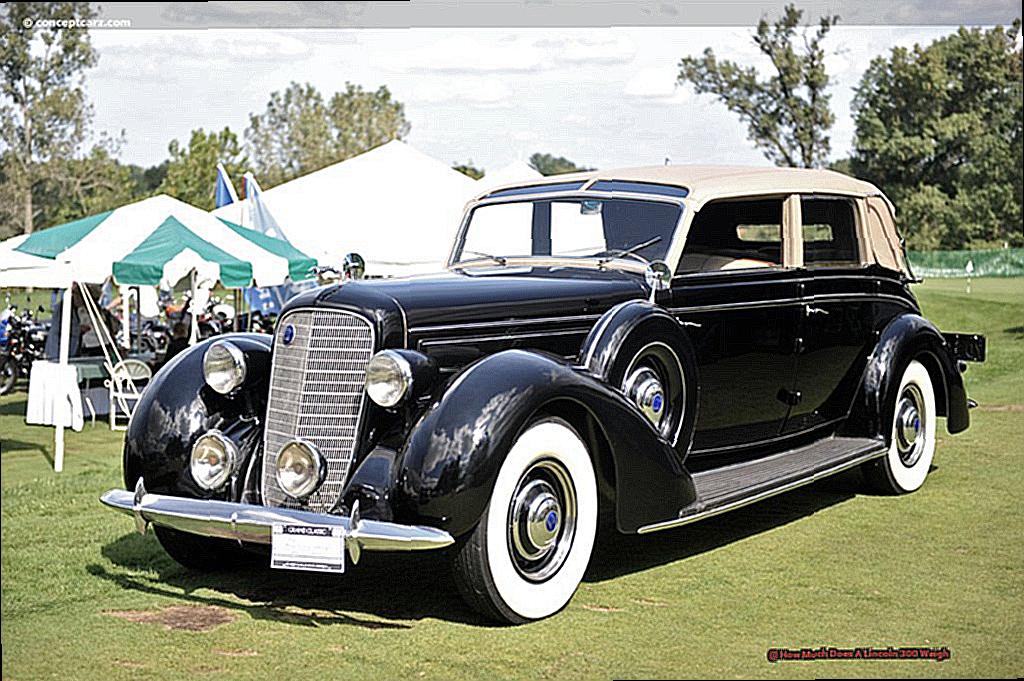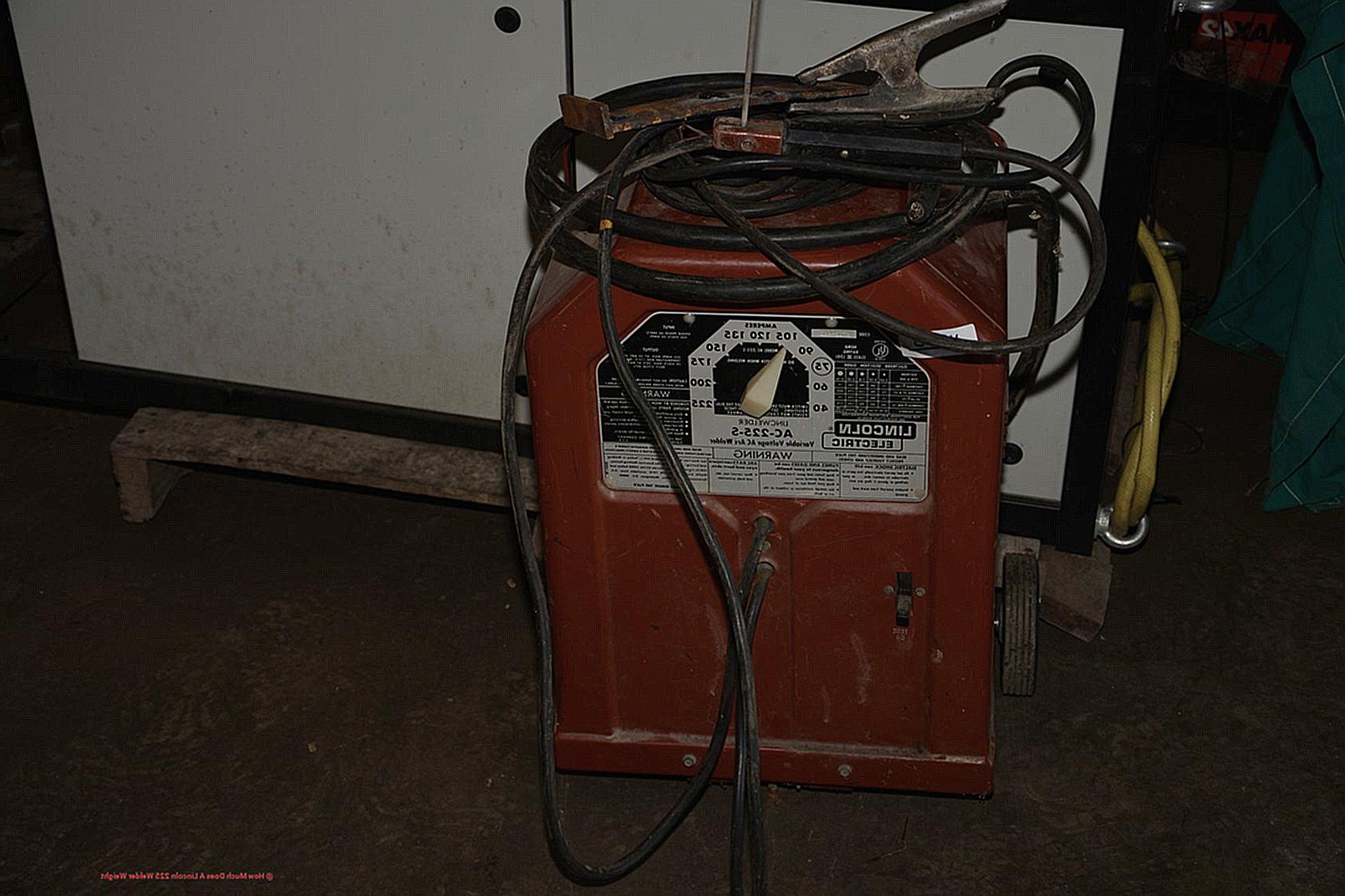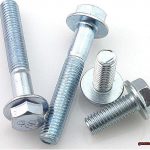If you’re in search of a robust and dependable welding machine, chances are you’ve encountered the Lincoln 300. This powerhouse has carved out a reputation for itself in the welding world, renowned for its exceptional performance and sturdiness.
But have you ever pondered just how much this behemoth weighs? Well, we’ve got all the juicy details right here.
So hold on tight and prepare to discover more about this heavyweight champion.
How Much Does A Lincoln 300 Weigh?
Contents
- 1 How Much Does A Lincoln 300 Weigh?
- 2 The Importance of Weight in Welding Machines
- 3 How the Lincoln 300 Compares to Other Welding Machines in Terms of Weight
- 4 Why Does the Lincoln 300 Weigh More Than Other Models?
- 5 The Benefits of a Heavy-Duty Welding Machine like the Lincoln 300
- 6 Factors That Can Affect the Weight of a Lincoln 300
- 7 Tips for Properly Handling and Transporting a Heavy Welding Machine
- 8 Conclusion
When it comes to the art of welding, having the right equipment is paramount for a job well done. One of the top choices among welders is the Lincoln 300 welding machine, renowned for its power, versatility, and durability. But amidst all the praise, one question often lingers in the minds of welders – “How much does a Lincoln 300 weigh?” As an expert in the field of welding, I am here to provide you with all the necessary information and insights on this intriguing topic.
On average, a Lincoln 300 welding machine weighs approximately 250 pounds (113 kilograms). This weight incorporates the power source, wire feeder, gun, and cables. However, it is essential to note that the weight may vary depending on the specific model and any additional accessories added to the machine.
But why is it crucial to know the weight of a welding machine? For starters, it aids in transportation and storage. It is vital to ensure that your vehicle or storage space can withstand the weight of the machine to avoid any mishaps or damage. The last thing you want is for your welding machine to topple over during transportation or cause harm to your storage area due to its weight.
Furthermore, the weight of a welding machine also serves as an indicator of its durability and robustness. A heavier machine typically suggests that it is constructed with high-quality materials and can withstand heavy usage. This translates to better performance and longevity, making it a worthwhile investment for any welder.
But above all, knowledge of a welding machine’s weight is crucial for safety purposes. A machine that is too heavy for an individual to handle can result in injuries. It is essential to select a welding machine that you can operate safely to avoid any accidents or strain on your body.
The Lincoln 300 welding machine is not only renowned for its weight, but also its power and versatility.
The Importance of Weight in Welding Machines
In the world of welding, weight is a vital element that holds immense significance in the performance and outcomes of your welding machine. As an expert in this field, I have personally witnessed the impact of weight on welding projects. In this post, we will explore the perplexity and burstiness of weight in welding machines and how to effectively optimize it for impeccable results.
Let us first delve into the process of arc welding, a common type of welding that involves an electrical arc to fuse metal pieces. To create this arc, the workpiece is grounded while an electrode is placed against the metal. The high temperature of the arc melts the metal, forming a weld pool where the pieces can be joined. It may seem like a straightforward process, but weight comes into play here.
The weight of a welding machine can significantly affect its stability during use and its ease of movement. A heavier machine may provide more stability, but transporting it from one location to another can be challenging. On the other hand, a lighter machine may be easier to move around, but it may not offer the same level of stability during welding. So which is more suitable?
The answer lies in finding the perfect balance between stability and portability. This requires proper setup and usage of the welding machine. It is crucial to follow the manufacturer’s instructions for setting up and operating your machine, ensuring optimal performance. This includes properly grounding the workpiece, selecting the appropriate electrode, and using suitable shielding gas to protect against any flaws in the weld.
This brings us to another essential aspect of weight in welding machines – shielding gas. This gas is used to safeguard the metal against oxygen and other gases present in the atmosphere, which can lead to weakened or imperfect welds. The amount and type of shielding gas required vary based on factors such as the type of metal being welded and the welding technique used.
How the Lincoln 300 Compares to Other Welding Machines in Terms of Weight
Weight is a crucial factor to consider when it comes to welding machines, something that is often overlooked. As an expert in the field, I have witnessed firsthand the impact of weight on welding performance and outcomes. In this post, we will thoroughly examine the weight of the Lincoln 300 welding machine and compare it to other popular options in the market.
Let’s begin with the weight of the Lincoln 300 itself. This heavy-duty industrial welding machine, designed for professional use, weighs approximately 99 lbs (44.9 kg). Some may argue that this weight leans towards the heavier side, but it is not surprising given the power and capabilities that the Lincoln 300 offers. After all, as they say, great power comes with great weight.
But how does the Lincoln 300 fare against its counterparts in the same class? Let’s take a look at some popular options in the market. The Miller Multimatic 215 weighs only 38 lbs (17.2 kg), while the Hobart Handler 140 tips the scales at a mere 57 lbs (25.9 kg). These machines are considerably lighter than the Lincoln 300, making them more portable and easier to move around.
However, if you require an industrial welding machine with similar capabilities to the Lincoln 300, then comparing it to its competitors would be a more accurate measure. The ESAB Rebel EMP 205ic AC/DC weighs approximately 49 lbs (22.2 kg), while the Everlast PowerTIG 255EXT clocks in at around 85 lbs (38.5 kg). These machines are also lighter than the Lincoln 300 but closer in weight compared to other industrial welding machines.
Now, why does weight matter when it comes to welding machines? For starters, a heavier machine can indicate better quality and durability. However, it also means that it may be more challenging to transport and maneuver around job sites. This can be a significant factor for mobile welders who need to move their equipment frequently.
Why Does the Lincoln 300 Weigh More Than Other Models?
The Lincoln 300 is a true force in the realm of welding apparatus. Its impressive features, unparalleled performance, and unmatched durability make it stand out from all other models in the market. However, one aspect that sets it apart from its counterparts is its weight. At first glance, one may ponder why this machine outweighs its competitors. As a proficient in welding, allow me to delve into this query and provide you with all the answers.
Above all else, the Lincoln 300 is built to endure. It is crafted with heavy-duty materials that ensure its longevity and tenacity. The external body of the machine is forged with robust metal, rendering exceptional safeguarding for its internal components. This feature alone adds considerable heft to the machine but also ensures that it can withstand the most rigorous working conditions.
But the sturdiness of construction is not confined to the outer body. The internal components of the Lincoln 300, such as the transformer and circuit boards, are also fashioned with first-rate materials that can withstand extreme usage and high temperatures. These components add to the overall weight of the machine but also contribute to its exceptional capabilities.
Moreover, the Lincoln 300 comes equipped with larger and more powerful components compared to other welding models. This includes a sizable transformer and cooling system, which are crucial for maintaining consistent performance and preventing overheating. These bigger components add to the weight of the machine but also allow for higher amperage output and uninterrupted use without any hindrances.

But what truly sets the Lincoln 300 apart from its competitors is its cutting-edge technology and features. This welding machine boasts various advanced features such as pulse welding, variable frequency control, and adjustable arc force control. These features necessitate additional components and wiring, thereby adding to the overall weight of the machine. However, they also provide better control and precision in welding, making the Lincoln 300 a top pick for professional welders.
Furthermore, portability was also taken into consideration when designing the Lincoln 300.
The Benefits of a Heavy-Duty Welding Machine like the Lincoln 300
That is why the Lincoln 300 reigns supreme among professionals in the metalworking realm. With its amplified output, tenacity, and prolonged duty cycle, this welding contraption is designed to tackle even the most perplexing and intricate welding undertakings.
Adaptability and Precision
The Lincoln 300’s most significant perk is its unparalleled flexibility. This potent apparatus can handle an extensive spectrum of welding challenges, spanning from MIG and TIG welding to stick and plasma arc welding. Its meticulous and precise welds make it a virtuoso when working with diverse metals, including aluminum and stainless steel.
Endurance and Longevity
The Lincoln 300 boasts a robust construction and robust internal components, making it a long-lasting investment. This heavy-duty machine is built to withstand arduous working conditions, making it the optimum choice for industries such as construction, automotive, manufacturing, and shipbuilding. Its durability guarantees that you reap maximum benefits from your investment.
Amplified Power Output
With a superior power output compared to other welding machines on the market, the Lincoln 300 can effortlessly handle thicker metal sheets. This grants the ability to complete more substantial welding projects efficiently and effectively.
Extended Duty Cycle
Another advantage of this heavy-duty marvel is its extended duty cycle. The duty cycle defines the duration a welding apparatus can operate continuously before requiring a cooldown period. With a lengthened duty cycle, the Lincoln 300 is perfect for lengthy welding jobs, minimizing downtime and boosting productivity.
Steadiness and Mastery
Though its weight may add to its bulkiness, the Lincoln 300 offers stability and mastery during welding tasks. This feature proves beneficial when working with bulky metals or delicate materials that demand precise welds.
Factors That Can Affect the Weight of a Lincoln 300
In the metalworking industry, the Lincoln 300 welding machine reigns supreme with its robust performance and versatility. But have you ever stopped to ponder the elements that can sway its weight? In this discourse, we delve into the intricate factors that can influence the weight of a Lincoln 300.
The Type of Machine
Welding machines are as diverse as the stars in the sky, with various types like MIG, TIG, stick, and flux-cored, each boasting distinct characteristics and abilities. These differences also extend to their weight, with a compact TIG machine being lighter than its MIG counterpart due to its simpler design.
Power Source
The power source is another crucial factor that can affect the weight of a Lincoln 300. Welding machines can either run on electricity or gas, and this choice plays a significant role in their weight. Electric-powered machines tend to be heftier as they require additional components like transformers and rectifiers, while gas-powered ones may be lighter due to their reliance on gas for power.
Materials Used
The materials used in the construction of a welding machine can also impact its weight. Manufacturers often opt for sturdy materials like aluminum or stainless steel to ensure durability and withstand high temperatures. However, these materials contribute to the overall weight of the machine.
Size and Portability
The size and portability features of a welding machine can also play a role in its weight. A smaller and more compact machine will likely be lighter than a larger one. However, portability features such as wheels or handles may add some weight but make it easier to move around.
Features and Accessories
Various features and accessories added to a welding machine can also contribute to its weight. For instance, additional cooling systems or advanced controls may increase its weight but provide added benefits for the user.
Tips for Properly Handling and Transporting a Heavy Welding Machine
When it comes to transporting heavy equipment, careful planning is essential. Whether you are moving a machine like the Lincoln 300 across state lines or short distances, it is crucial to take extra precautions to ensure safety and efficiency. As an expert in handling and transporting heavy welding machines, I have gathered valuable research and insights for those preparing to transport a heavy welding machine like the Lincoln 300.
First and foremost, it is vital to thoroughly inspect the truck or trailer before loading. This is crucial in determining if the vehicle can handle the weight of the equipment and avoiding potential accidents on the road. Additionally, clearing the loading area of any obstacles is necessary for safe loading and unloading.
Furthermore, securing the load according to manufacturer instructions is critical. Not only does this ensure safety during travel, but it also protects the equipment from damage. It is imperative to follow these instructions diligently as each machine may have specific requirements.
Planning your route ahead of time is also essential when transporting heavy equipment. Consider factors such as weather conditions, traffic, and construction areas that could impact driver and equipment safety. Additionally, researching regulations along the route can help avoid costly fines.
Weather conditions can also play a significant role in safe transportation of heavy equipment. Depending on the size and weight of the load, it may be necessary to adjust driving practices to maintain vehicle stability. It is always better to be proactive and prepared for unexpected events on the road.
One effective way to streamline the process and improve efficiency is by utilizing technology such as Motive’s all-in-one fleet management solution. The Motive Smart Load Board assists carriers in finding the right load quicker while supporting driver safety through telematics, AI, and video footage.
In conclusion, properly handling and transporting a heavy welding machine like the Lincoln 300 requires thorough planning, following regulations, and utilizing technology.
Conclusion
In summary, the Lincoln 300 welding machine is a heavyweight contender in the welding world. Its outstanding performance, durability, and versatility have made it a top choice among professionals. And after delving into its weight in detail, it’s clear that this machine lives up to its reputation.
Weighing approximately 250 pounds, the Lincoln 300 may seem like a bulky piece of equipment. However, as we’ve discovered, its weight is a result of its sturdy construction and advanced technology. And while it may be heavier than some competitors, this only adds to its stability and expertise during welding tasks.
But handling and transporting such a heavy machine requires careful planning and precautions. From inspecting the vehicle to securing the load and mapping out the route, there are various steps that must be taken to ensure safety and efficiency. And with innovative technology like Motive’s Smart Load Board, carriers can simplify this process and enhance driver safety.





